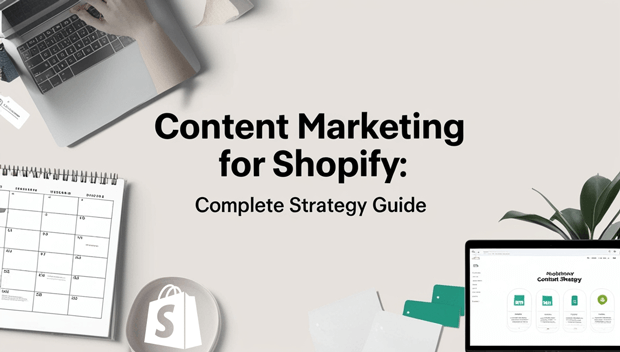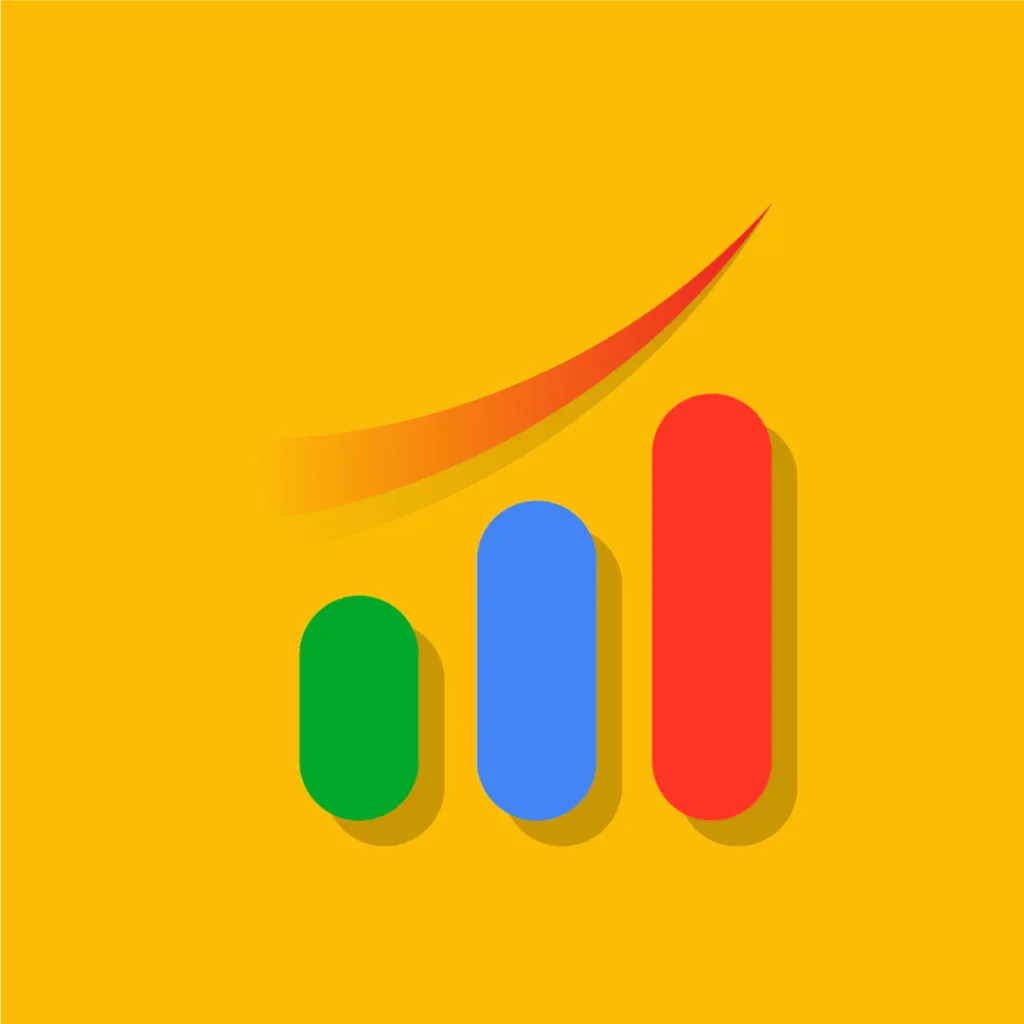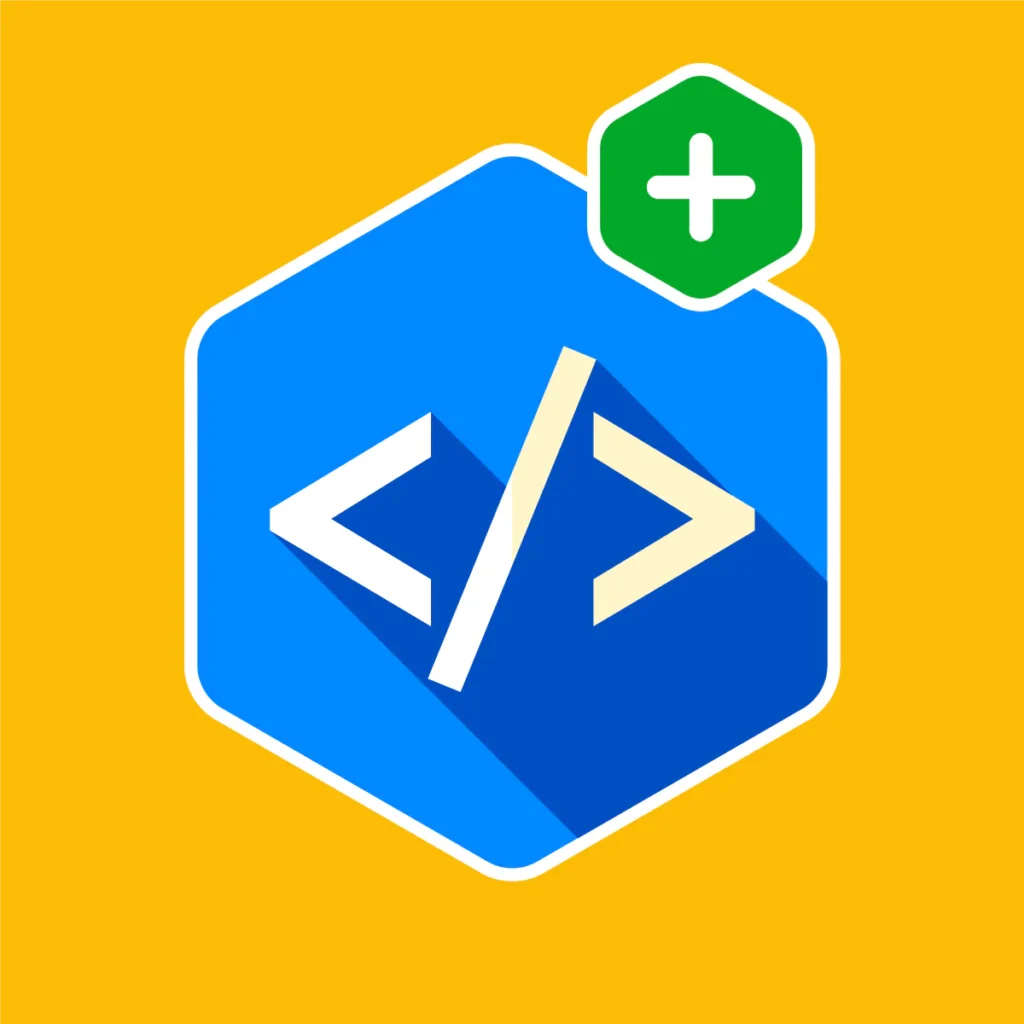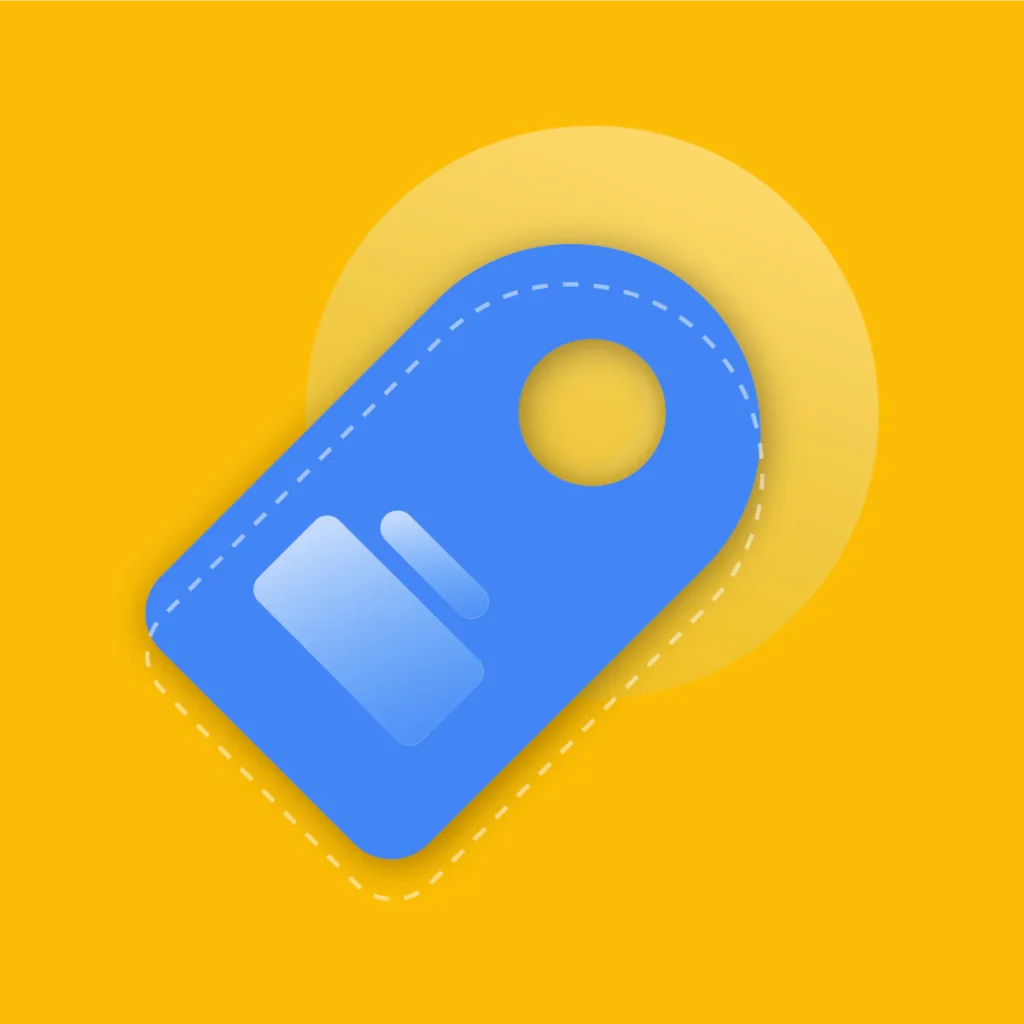For Shopify store owners, the digital landscape has never been more competitive. With over 1.75 million merchants using the platform as of 2023, standing out requires more than just a beautiful storefront and quality products.
Content marketing has emerged as the difference-maker for successful Shopify businesses, with studies showing that e-commerce sites utilizing content marketing see 6x higher conversion rates than those focusing solely on product listings
The truth is that most Shopify entrepreneurs pour countless hours into product development and store design but overlook the powerful engine that could be driving their traffic and sales: strategic content marketing.
According to HubSpot’s 2024 marketing report, e-commerce brands implementing consistent content strategies see a 30% higher customer retention rate and 25% reduction in customer acquisition costs.
In this comprehensive guide, we’ll walk through everything you need to know to build, implement, and scale a content marketing strategy specifically optimized for Shopify success.
Whether you’re just launching your store or looking to revitalize an existing one, this roadmap will help transform your content from an afterthought into your most valuable marketing asset.
Key Takeaways
- Shopify stores with blogs receive 55% more website visitors than those without content marketing strategies
- Creating a content calendar specifically tailored to your Shopify niche can increase organic traffic by up to 78%
- The right mix of product-focused and educational content can boost conversion rates by 26% for Shopify stores
- Repurposing blog content across social media channels connected to your Shopify store creates 4x more customer touchpoints
- Implementing SEO best practices within your Shopify content strategy can reduce paid advertising costs by up to 40%
Understanding Shopify Content Marketing

Content marketing for Shopify isn’t just about writing blog posts it’s about creating a content ecosystem that seamlessly integrates with your product catalog and shopping experience. Unlike content for service-based businesses, Shopify content marketing has unique considerations:
- Direct revenue attribution: Every piece of content should have a clear path to product discovery
- Platform-specific SEO requirements: Shopify has its own SEO structure and limitations
- Visual integration: Content must visually align with your store’s branding and design
- Purchase journey alignment: Content needs to map to specific stages in the e-commerce buying process
The most successful Shopify stores understand that content isn’t separate from their commerce strategy it’s an extension of it.
According to a BigCommerce industry report, e-commerce sites with integrated content strategies show 40% higher average order values compared to those with disconnected approaches.
Recommended Blogs for You:
👉 Shopify Store Design Guide: Create a Professional Store 2025
👉 How to Increase Average Order Value: 10 Proven Strategies to Boost Revenue
👉 Shopify Performance Metrics: Essential KPIs to Track
👉 11 Best Discount Apps on Shopify App Store 2025
👉 Shopify Statistics: 45+ Crucial Facts & Figures for E-commerce Success in 2025
Building Your Shopify Content Strategy Foundation
Step 1: Audit Your Shopify Store and Audience
Before writing a single word, you need to understand:
1. Who your ideal customers are beyond basic demographics.
2. What questions they’re asking before purchasing products like yours
3. Which content formats they prefer consuming (video, blog posts, tutorials, etc.)
4. Where they spend time online outside your store
Start by exporting your Shopify customer data and looking for patterns. Which products do first-time buyers typically purchase?
What content do they engage with before converting? Complement this with competitor analysis to identify content gaps you can fill.
A survey by Shopify Plus found that 67% of successful merchants conduct formal audience research before developing their content strategies, while only 24% of underperforming stores do the same.
Step 2: Define Your Content Pillars
Content pillars are the 3-5 primary themes your Shopify content will revolve around. Effective content pillars for Shopify typically include:
- Educational content about your product category
- Lifestyle content showing your products in context
- Problem-solution content addressing pain points your products solve
- Community-focused content highlighting customer stories and experiences
- Trending topics relevant to your industry niche
For example, a Shopify store selling sustainable kitchenware might build content pillars around:
- Eco-friendly kitchen practices
- Zero-waste cooking techniques
- Sustainable materials education
- Customer sustainability journeys
- Seasonal eco-entertaining guides
Each content pillar should connect naturally to specific product categories in your store.
Step 3: Map Content to the Shopify Customer Journey
Shopify customers move through distinct stages before making a purchase. Your content strategy should address each:
Awareness Stage Content:
- Industry trend reports
- Educational blog posts
- “How to” guides related to your niche
- Thought leadership pieces
Consideration Stage Content:
- Product comparison guides
- Buying guides
- FAQ content
- Customer reviews and testimonials
Decision Stage Content:
- Detailed product descriptions
- Case studies
- Product demonstration videos
- User-generated content galleries
Post-Purchase Content:
- Product care guides
- Creative usage ideas
- Complementary product suggestions
- Customer spotlight features
According to Shopify data, stores that create journey-mapped content see 32% higher customer lifetime values than those creating content without strategic mapping.
Shopify-Specific Content Types That Drive Results
Product Storytelling Pages
Unlike standard product descriptions, product storytelling pages weave narrative elements around your merchandise. These long-form pages:
- Tell the origin story behind product development
- Highlight unique manufacturing processes
- Share the problem-solving journey
- Feature real customer experiences
Allbirds, a successful Shopify merchant, attributes a 27% increase in conversion rate to implementing storytelling elements in their product pages.
Collection Content Hubs
Transform standard collection pages into comprehensive content destinations by:
- Adding educational sections above product grids
- Incorporating buying guides specific to each collection
- Featuring embedded video content
- Including FAQ sections addressing collection-specific questions
This approach keeps customers engaged with your content while they browse products, extending time on site and improving conversion potential.
Shoppable Blog Posts
Standard blogs drive traffic but often fail to convert. Shoppable blog posts solve this by:
- Embedding product blocks within relevant content
- Using Shopify’s Product JSON-LD for rich results
- Implementing “Shop the Look” sections within lifestyle content
- Creating content that naturally contextualizes product usage
Brands implementing shoppable blogs see an average 18% higher click-through to product pages compared to standard blog formats.
Email-Exclusive Content
Your email list represents your most engaged audience. Create content specifically for subscribers like:
- Mini-courses delivered via email sequences
- Subscriber-only buying guides
- Early access to educational content
- Behind-the-scenes content about your products
According to Klaviyo’s e-commerce benchmark report, Shopify stores sending educational email content see 31% higher open rates than those sending only promotional messages.
Optimizing Content for Shopify SEO Success
Shopify-Specific Technical SEO Considerations
Shopify’s platform has unique SEO requirements:
1. URL structure limitations: Work within Shopify’s predetermined URL patterns
2. Blog organization: Utilize tags and categories strategically
3. Canonical tag management: Prevent duplicate content issues
4. Theme optimization: Ensure your theme follows SEO best practices
One technical advantage of Shopify is its naturally fast loading speed, with studies showing that e-commerce sites reducing load time by 0.1 seconds see conversion rates increase by 8%.
Keyword Research for Shopify Content
Effective keyword research for Shopify goes beyond basic search volume analysis:
1. Product-adjacent keywords: Terms related to product usage and problems
2. Buying intent modifiers: Adding “best,” “top,” “vs,” and similar terms
3. Long-tail product queries: Specific questions around your product category
4. Seasonal variations: Keywords that spike during relevant buying seasons
For example, rather than targeting just “kitchen knives,” a Shopify store might create content around “best knives for chopping vegetables” or “how to maintain carbon steel kitchen knives.”
Content Optimization Techniques for Shopify
Once you’ve identified keywords, implement them effectively:
- Title tags: Include primary keywords naturally in H1s and H2s.
- Image optimization: Use descriptive filenames and ALT tags for product images.
- Internal linking: Connect blog content to relevant collection and product pages
- Schema markup: Implement appropriate structured data for content types
- Meta descriptions: Write compelling descriptions including primary keywords
Remember that content optimization extends to your product pages too. According to SEMrush, product pages with extended content sections (500+ words) rank for 25% more keywords than those with minimal content.
Content Distribution Strategies for Shopify Stores
Integrating Social Media with Your Shopify Content
Social platforms provide powerful distribution channels for Shopify content:
1. Instagram: Share visually-rich snippets from blog posts with shopping tags
2. Pinterest: Create pins linking directly to relevant content and products
3. TikTok: Develop short-form educational content with Shopify product links
4. YouTube: Create how-to videos and product demonstrations with description links
According to Oberlo, Shopify merchants using omnichannel content distribution see 91% higher year-over-year customer retention rates.
Leveraging Shopify’s App Ecosystem for Content Distribution
Shopify’s app store contains powerful tools for content distribution:
- Email marketing apps: Automatically share new content with subscribers
- SEO apps: Optimize and track content performance
- Social sharing apps: Streamline cross-platform content promotion
- Review apps: Generate user content to complement your strategy
Implementing just one additional distribution channel can increase content reach by 30%, according to Shopify’s own marketing benchmarks.
Measuring Content Marketing Success on Shopify
Key Performance Indicators for Shopify Content
Tracking the right metrics ensures content marketing effectiveness:
1. Traffic metrics: Page views, sessions, and unique visitors
2. Engagement metrics: Time on page, scroll depth, and interaction rates
3. Conversion metrics: Add-to-carts, newsletter signups, and sales
4. SEO metrics: Keyword rankings, backlinks, and organic visibility
Set up Google Analytics 4 and Shopify Analytics to track these metrics consistently.
Create custom dashboards connecting traffic sources to conversion events to understand which content drives sales.
Calculating Content ROI for Your Shopify Store:
To justify ongoing content investment, calculate ROI using:
Content ROI = (Value of conversions – Content production cost) / Content production cost × 100
For example, if a blog post costs $300 to produce and generates $1,200 in sales:
Content ROI = ($1,200 – $300) / $300 × 100 = 300%
According to a study by Shopify, merchants consistently investing in content marketing see 3.5x ROI compared to those focusing exclusively on paid advertising.
Content ROI Calculator
Scaling Your Shopify Content Operation
Building a Sustainable Content Calendar
As your Shopify store grows, systematize your content production with:
1. Quarterly planning sessions: Align content with seasonal promotions
2. Monthly content themes: Organize content around cohesive topics
3. Weekly production schedules: Establish consistent publishing cadences
4. Content repurposing workflows: Transform existing content into new formats
Use project management tools like Trello or Asana to track content from ideation to publication, ensuring nothing falls through the cracks.
When and How to Outsource Content Creation
Most Shopify merchants reach a point where outsourcing becomes necessary:
1. What to keep in-house: Strategy development and approval processes
2. What to outsource first: Writing, design, and video production
3. Finding specialized creators: Look for those with e-commerce experience
4. Managing external teams: Create clear brand guidelines and briefs
According to UpWork's 2023 Freelancing Report, e-commerce businesses outsourcing content creation see a 46% faster time-to-market for new initiatives compared to those handling everything internally.
Case Studies: Successful Shopify Content Marketing Examples
Gymshark: Building a Fitness Content Empire
Gymshark, one of Shopify's billion-dollar success stories, built their empire on content marketing:
- Created comprehensive workout guides connected to specific product lines
- Developed a community content hub featuring customer transformations
- Produced educational content about fitness topics adjacent to their products
Their approach resulted in a 79% increase in organic traffic and 35% higher average order values for customers engaging with content before purchasing.
Beardbrand: From Blog to Shopify Success
Beardbrand began as a beard care blog before launching products:
- Created educational content targeting a specific niche
- Developed a YouTube channel with millions of views
- Built trust through expert advice before monetizing
Their strategy helped them grow to a multi-million dollar Shopify business with 80% of first-time customers having engaged with content before purchasing.
Frequently Asked Questions About Shopify Content Marketing
How often should I publish new content on my Shopify store?
Consistency matters more than frequency. For most Shopify stores, publishing 1-2 high-quality pieces weekly yields better results than daily low-quality content.
According to Shopify data, stores publishing at least 4 pieces of content monthly see 45% higher organic traffic than those publishing sporadically.
Should I focus on blog posts or other content formats for my Shopify store?
While blogs form a solid foundation, the most successful Shopify stores use a mix of formats. Implement an 80/20 approach: 80% fundamental formats (blogs, product descriptions) and 20% experimental formats (videos, interactive tools).
Data shows that Shopify stores using at least 3 content formats see 34% higher engagement rates.
How do I connect my content marketing to my Shopify products?
Every piece of content should include contextual links to relevant products, but avoid being overly promotional. The ideal ratio is 80% educational/entertaining content with 20% product mentions.
Implement a "related products" section at the end of each content piece to provide natural next steps for engaged readers.
What's the average ROI timeline for Shopify content marketing?
Most Shopify stores see initial traffic improvements within 3-4 months, but significant ROI typically emerges around 6-8 months after implementing a consistent strategy.
According to Shopify Plus data, stores continuing content marketing for 12+ months see 4.5x higher returns than those abandoning efforts after initial results.
Conclusion: Building Your Shopify Content Marketing Roadmap
Content marketing for Shopify isn't a one-size-fits-all solution it's a strategic framework that must be tailored to your specific store, products, and customers.
The most successful Shopify entrepreneurs recognize that content isn't just another marketing channel it's the foundation that strengthens all other acquisition and retention efforts.
Begin by implementing the foundational strategies outlined in this guide: audience research, content pillar development, and journey mapping.
Then gradually expand into the Shopify-specific content types and distribution methods that resonate with your particular audience.
Remember that content marketing is a marathon, not a sprint. The Shopify stores seeing the greatest returns are those that approach content with consistency, quality, and strategic intent not those chasing quick wins or viral moments.
By thoughtfully implementing the strategies in this guide, you'll build a content marketing engine that not only drives traffic and conversions today but establishes your Shopify store as an authoritative destination in your niche for years to come.



